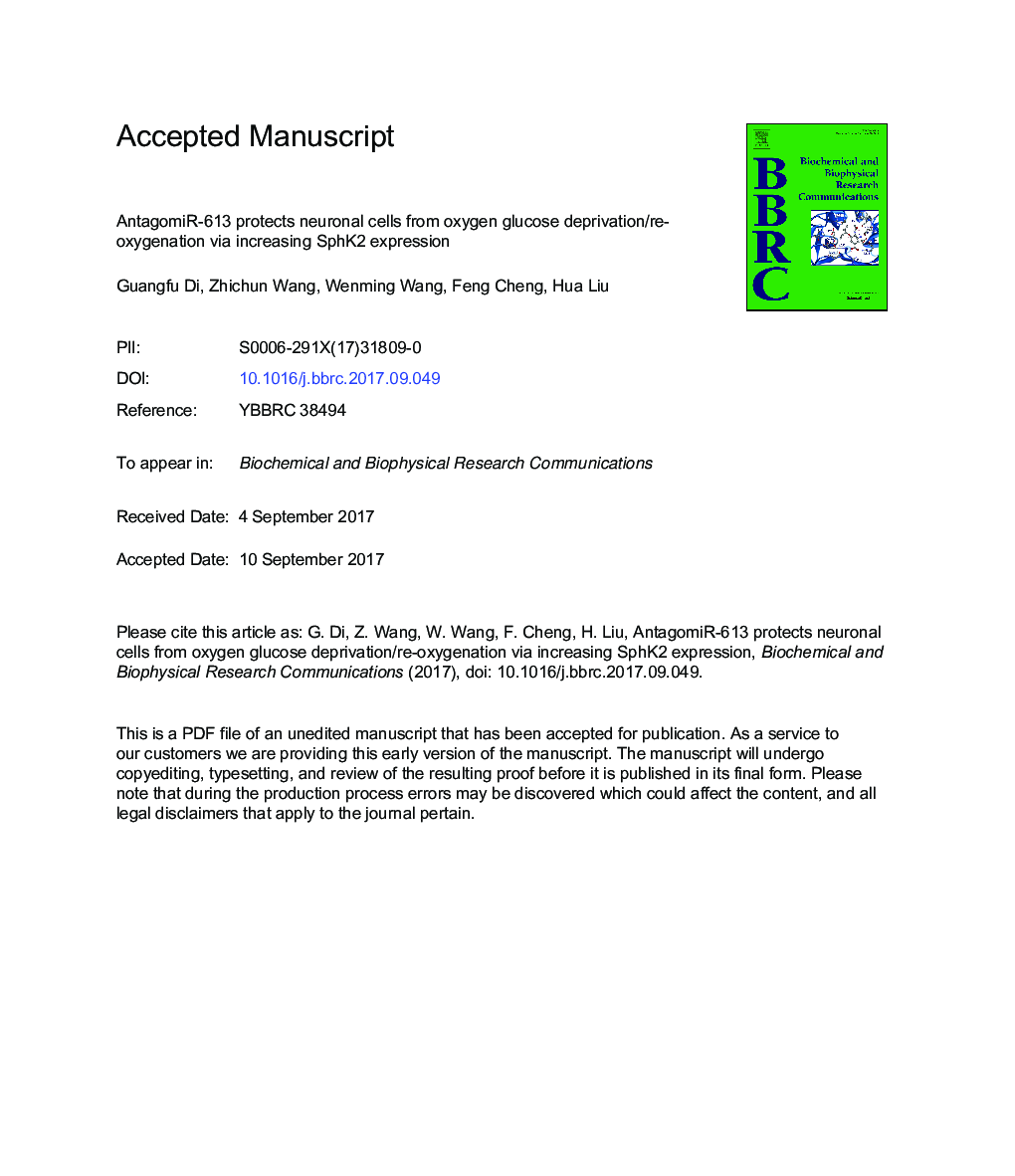| Article ID | Journal | Published Year | Pages | File Type |
|---|---|---|---|---|
| 5504624 | Biochemical and Biophysical Research Communications | 2017 | 19 Pages |
Abstract
Oxygen glucose deprivation (OGD)/re-oxygenation (OGDR) causes damages to neuronal cells. Sphingosine kinase 2 (SphK2) expression could exert neuroprotective functions. Here, we aim to induce SphK2 expression via inhibiting the anti-SphK2 microRNA: microRNA-613 (“miR-613”). In both SH-SY5Y neuronal cells and primary murine hippocampal neurons, transfection of the miR-613's specific inhibitor, antagomiR-613 (“antamiR-613”), induced miR-613 depletion and SphK2 expression. Reversely, forced over-expression of miR-613 caused SphK2 downregulation in SH-SY5Y cells. OGDR-induced cytotoxicity in neuronal cells was largely attenuated by antamiR-613. SphK2 is required for antamiR-613-induced actions in neuronal cells. SphK2 knockdown (by targeted-shRNAs) or inhibition (by its inhibitor ABC294640) almost completely abolished antamiR-613-mediated neuroprotection against OGDR. Further studies showed that OGDR-induced reactive oxygen species (ROS) production, lipid peroxidation, and DNA damages in SH-SY5Y cells were largely attenuated by antamiR-613, but were intensified by miR-613 expression. Taken together, we conclude that antamiR-613 protects neuronal cells from OGDR probably via inducing SphK2 expression.
Keywords
Related Topics
Life Sciences
Biochemistry, Genetics and Molecular Biology
Biochemistry
Authors
Guangfu Di, Zhichun Wang, Wenming Wang, Feng Cheng, Hua Liu,
